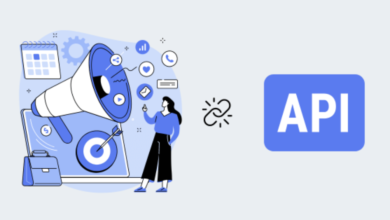In today’s data-driven world, many organisations have introduced, or are in the process of implementing artificial intelligence (AI) systems, to drive efficiency and enhance overall return on investment. In fact, according to recent research from Gov UK, around 15 per cent of all businesses have adopted at least one AI technology, which translates to around 432,000 companies.
As digitalisation transformation initiatives continue to advance at rapid speed, technologies such as AI are proving invaluable. This is particularly true within the email marketing world, where teams are required to create campaigns which resonate with the recipient. In fact, personalisation is a topic which almost every marketer is focusing on, especially during the current cost of living crisis and ongoing pandemic. With these factors in mind, it will be essential to see how brands utilise AI tools and techniques going forward.
The core benefits
As mentioned above, the current economic climate has resulted in many consumers being more cautious than ever about their outgoings. This has resulted in a shift in spending behaviour and brand loyalty, meaning companies need to be more creative about the ways they connect with their target market. This is where AI can help, by allowing marketers to send relevant and engaging content at scale to the intended customer.
Essentially, AI tools can analyse campaigns and follow the cognitive process of the human brain. The intelligent system can learn how to recognise patterns, predict behaviours, and generate conclusions. In addition, AI is being used for predictive eye-tracking, helping marketers figure out which aspects of their email stand out the most, and in what order readers view the various elements of the email.
AI is also regularly used for “next best offer” selection, which is particularly effective for senders that promote multiple offers in one email, such as daily deals programmes.. The team will often use this to analyse previous customer behaviour, which then determines the order in which their offers are displayed to maximise the likelihood of generating a response. Research has shown that fewer than half of all email subscribers scroll “below the fold”, so making sure the offer they are most likely to respond to is clearly visible is vital in terms of generating a response.
Although AI may seem like a golden ticket for email marketers, it is important to be aware of where else the technology is used in the ecosystem. For example, Gmail filtering is driven by AI, and major email security vendors also harness AI to drive their solutions. Indeed, AI is also harnessing human behaviour to prevent emails from being delivered, hence why generating positive subscriber engagement is such an important part of deliverability. By understanding the bigger picture, marketers can get a better idea of how to apply it to their own campaigns.
How AI is applied to emails
Before AI implementation, marketing teams launching a campaign would create the HTML, upload it, draft some subject lines, and then decide what would work best. Today, there are platforms which combine deep learning with Natural Language Generation (NGL), for example Phrasee. This is an AI software solution which can produce optimised text from underlying non-linguistic representation of information.
To put this into context, there are countless ways to say the same phrase, such as ‘half price’ or ‘click here’. Platforms that use NGL allow users to click a button and see all the options for each phrase or sentence based on the language that customers have historically been most responsive to. Although this has its advantages, machine learning (ML) needs to be layered on top to rank the options from best to worst. Then, an advanced dynamic optimisation system samples the options and runs them in a real-time optimisation test, maximising upside while minimising downside. The result is the most effective language for the target audience at that time, in real-time.
AI-powered platforms revolutionise customer experiences by optimising the language they use across the full customer journey and spectrum of digital brand channels. Therefore, AI has proven to be an invaluable tool, which is truly helping organisations connect with customers and remain competitive.
There are a lot of different technology-driven options available for various industries. Although AI is becoming used more than ever before globally, we are still in the early days of its development. Indeed, it is an exciting time for marketers, and in an industry which is quick to evolve to meet customer needs, there is a lot of potential with AI innovations and other advanced technologies.





